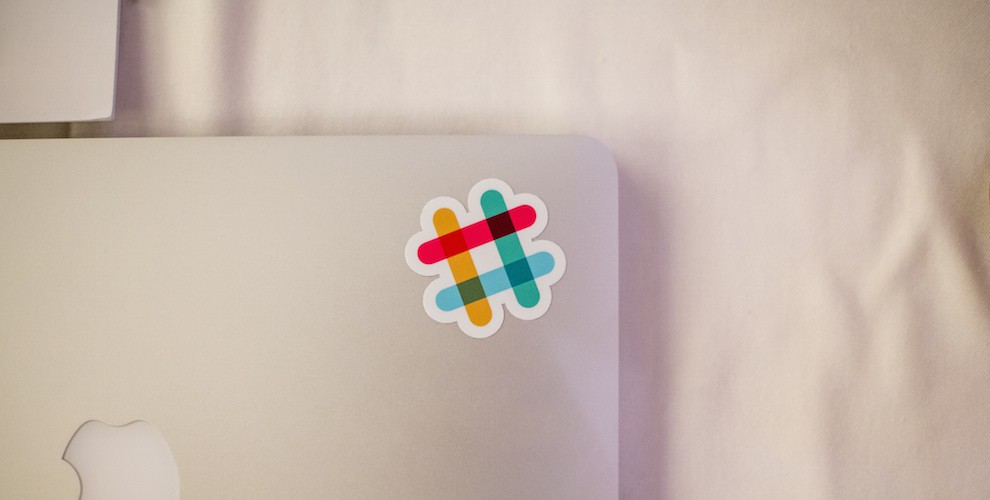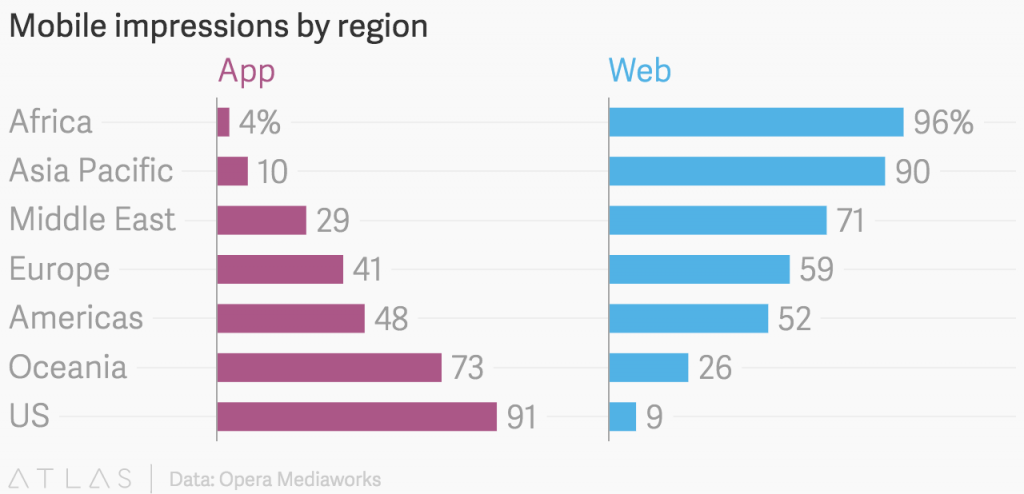Sections
Mobile Solar Systems
[avatar user=”malm” size=”small” align=”left” link=”file” /]
Benedict Evans wrote a thought-provoking blog post this week about how smartphones are now the “sun” at the heart of a global mobile ecosystem orbited by a vast software and hardware component supply chain centred around Silicon Valley and Shenzen:
With billions of people buying a device every two years, on average, the phone business dwarfs the PC business, which has an install base of 1.5-1.6bn devices replaced every 4-5 years. PC sales are a bit over 300m units a year where phone sales are now close to 2bn, of which well over half, and growing, are now smartphones.
Smartphones have a scale that is unique in tech history due in large part to the replacement cycle:
This new “heliocentric” solar model has replaced an older “geocentric” one for PCs which revolved around Microsoft. The aftershocks from the equivalent of a Copernican shift in mobile worldview are still being felt most notably in the industry scale Microsoft-Nokia debacle. Symbian was a key evolution within the old geocentric model. To stretch the bounds of metaphor to near breaking point, however, it turned out to be a moon and not a planet. The Verge conducted an exploration of its terrain this week with a review of a “vintage” Psion 5 18 years after the 1997 launch of what was seen in its day as a revolutionary product. The Psion 5 contained pretty much the core software platform that was rebranded in 1998 as Symbian OS. The Verge found much to admire but complained about the display quality and lack of software ecosystem. The latter is an inevitable consequence of progress. The former reflects the struggle that a vendor like Psion would have had to secure high quality display components in the late 1990’s when the Shenzen supply chain was still in the process of formation.
/cdn0.vox-cdn.com/uploads/chorus_asset/file/3924442/IMG_8954.0.jpg)
Facebook indubitably is a giant planet in the new heliocentric mobile model. The extent of their dominance was underlined by the latest monthly active user (MAU) statistics revealed by Mark Zuckerberg suggesting based on latest estimates that more than half of people who use the internet also actively use Facebook and one in every five minutes spent on mobile phones is spent within their properties.

Where does the company go from there? This Vision Mobile piece argues that that they will exploit their unassailable position as a global brand to pivot beyond their current focus on advertising to a huge install base in order to disrupt personal finance:
Facebook will be launching a social marketplace combined with financial services
The evolution of mobile from Psion to Facebook has been a two decade epic of interplanetary scale with many twists and turns. The next two decades are likely to be equally unpredictable.
Devices and Manufacturers
- The Verge reviewed Windows 10 and found much to admire including the return of the Start menu, Cortana integration and above all the fact that it’s a free upgrade:
Windows 10 is hugely exciting. I rarely touch my MacBook Air anymore as I find the combination of some good hardware (like the Dell XPS 13) and Windows 10 is a joy to use. I like the direction Microsoft is taking with Windows 10, accepting feedback and ideas from its customers along the way. It feels like the best way to shape Windows into something people enjoy using, rather than something they have to use.
/cdn0.vox-cdn.com/uploads/chorus_asset/file/3913062/Screenshot__40_.0.png)
- 14 million Windows 8.1 users availed themselves of the update in the first 24 hours. The Verge pointed out that by doing so they were engaging in a P2P network download.
- Samsung are already discounting the Galaxy S6 and S6 Edge after reportedly disappointing early sales. They’re still well regarded flagship Android propositions but competition is fiercer than ever even in that space.
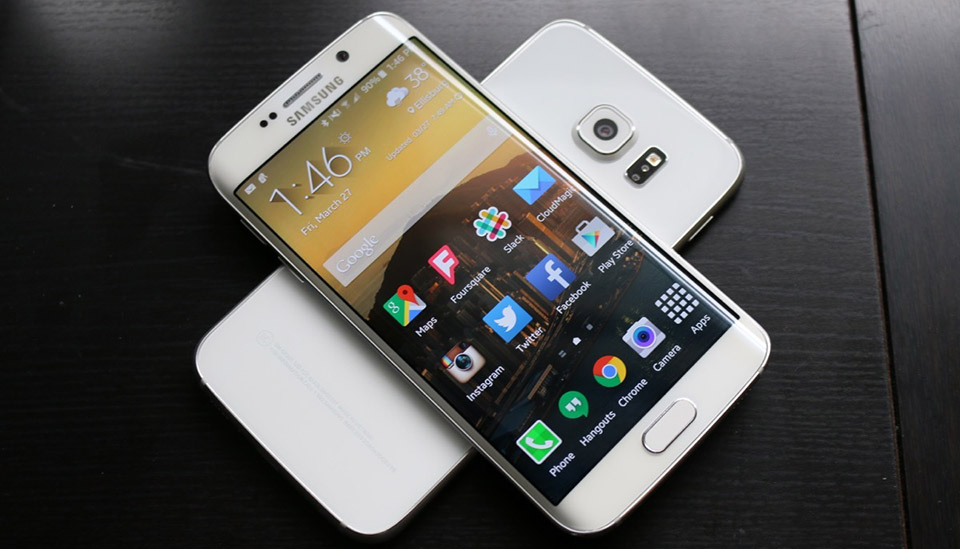
- Samsung have also had to accommodate the concerns of Chinese authorities and allow users to uninstall their own brand apps from the S6 if they wish. It will be interesting to track the take up of this Samsung ‘anti-feature’:
Samsung Electronics is distributing programs that allow Chinese consumers using Galaxy smartphones to delete pre-installed mobile applications in those devices
- This faux-leather retro flip phone from LG is LTE-capable and runs Android 5.1:

Apps and Services
- Jeremy Clarkson and his Top Gear team will reprise their famous auto magazine antics on Amazon Prime. Amazon are reportedly paying the three presenters and producer “$250 million to produce three, 12-episode seasons“. It sounds like a lot but as Benedict Evans pointed out this week, “that’s less than the Fire Phone cost them” and it will probably generate a more clear cut benefit for the company:
Even at such a lofty price, the investment by Amazon seems safe. … the show will only be available to members of the company’s Prime Instant Video streaming service, which in the United States costs $99 a year. With some 350 million viewers tuning in around the globe for the Clarkson/Hammond/May era of Top Gear, the deal has the potential to dramatically increase the number of Prime subscribers, which comes with free two-day shipping, Kindle book loans, and the Prime Music service on top of video streaming.
- Unless you’ve been living on the tech workplace equivalent of a desert island for the last year, chances are you’ll have heard of and likely used Slack. The extent to which the proposition has permeated the mainstream is well-conveyed in this fascinating survey of how 7 leading news organisations use Slack in their workflow. Interestingly, all of them seem to have gone well down the route of further service integration with the likes of Zapier, WordPress, GitHub and Twitter plugins:
“It ends up becoming the fount of office culture,” Alexis Madrigal, the editor-in-chief of Fusion, told me. “It is to the enterprise what Vine is to youth culture more broadly. In most media companies, the tech people are very separate from the editorial people. The nature of the work is different, the pacing is different. So it’s nice to have a selected digital gathering spot for everyone, that’s not just about work. Slack is never all just about work — all Slack places that I’ve ever seen or heard of are filled with jokes and culture beyond the work, and I think that’s the genius of the platform.
Google and Android
- The disclosure of a serious security hole called Stagefright affecting potentially hundreds of millions of Android devices triggered by simply receiving a malformed MMS on most recent Android devices received widespread mainstream coverage. TrendMicro published a handy technical deep-dive outlining the root cause, namely an integer overrun in .mkv media file handling that results in a local denial of service. They later highlighted out another attack vector in the same Stagefright component this time in MPEG4 file handling suggesting a family of related issues:
- The bug can also be triggered from within Chrome using the same malformed .mkv:

- Google now appear to be aggregating location-specific user activity data to build a picture of how busy a corresponding outlet is:

- Google also added support for text translation for an additional 20 languages in Translate.
- Dmail is a Chrome plugin that lets you delete email well after it has been sent and also send self-destructing emails. It’s likely to be a huge success:

Asia
- Some interesting data points from Jing Daily on the dramatic pivot from offline to online travel agency in China:
According to the 2015 China International Travel Monitor report recently released by Hotels.com, the percentage of Chinese tourists who used a travel agent was cut by more than half compared to last year—only 13 percent in the 2015 study said they had done so, compared to 34 percent in 2014. At the same time, the number of travelers using an online booking source has soared this year, rising from 53 percent in 2014 to 80 percent in 2015.
- According to the FT, Uber “is set to plough $1bn into a major expansion in India, placing its investment in the country on a par with China and signalling an escalation of its rivalry with domestic ride-sharing Ola.” It represents the “last 1bn person market left“. Even so, the company will face tough obstacles in the form of the regulatory landscape, signing up drivers and customers and dealing with infrastructure.

- The fastest growing mobile phone markets “don’t use apps“ making for a sharp contrast with more developed Western markets:
Africa and Asia, the two fastest growing mobile markets, aren’t very big on apps. … The overwhelming majority of mobile internet activity in the regions is spent on web pages.
Cloud and Infrastructure
- DevOps skills are very much in demand but according to data from dice.com, being a Cloud Architect seems to be the hottest thing to have in your skills kit bag right now:
Over the next several quarters, as companies embrace new concepts of infrastructure, they’ll need more technology pros with the ability to build, monitor and adjust systems. Those who learn the latest tools could find themselves more highly sought-after by employers.

- It’s an unambiguous market signal illustrating how old-school IT is being leapfrogged by software defined skillsets. Computer Weekly put a brave face on proceedings suggesting that the traditional IT department isn’t being “sidelined by cloud” even though their evidence clearly points to the rise of “shadow IT” and the increasing need to adapt to new realities:
Advantage in the future will come from how well organisations adapt to the new, much faster, and more collaborative way of doing business that cloud makes possible. Success will depend on how well organisations manage not only their use of cloud, but also the changes required in skills, processes, business models, and relationships – both inside and outside the traditional walls of the enterprise.”
- In other words, agility is moving from a buzzword to being at the heart of the modern digital Enterprise:
Agility has moved from buzzword to business-critical, and an organization’s ability to constantly change quickly and decisively based on feedback, is almost as important as the changes it actually decides to make
- The UK Government Digital Service (GDS) have published a blog article outlining the application process for joining the unit as a web developer. It’s pretty radical for including an onsite coding exercise and a focus on general programming competency rather than specific experience:
The roles we’re recruiting for will mainly be using Ruby, Python and Java. However, we’re not that concerned about what languages you know; if you’re a competent programmer, you’ll be able to pick up the relevant ones fairly quickly.
Internet of Things and Wearables
- Wize Mirror is a “Magic Mirror” of the sort that Michio Kaku wrote about in his landmark 20th century book Visions. It brings to mind the mirror on the wall trope of fairy stories:
Wize Mirror looks like a mirror, but incorporates 3D scanners, multispectral cameras and gas sensors to assess the health of someone looking into it. It does this by examining the person’s face, looking at fatty tissue, facial expressions and how flushed or pale they are.
- Yours for $50 and possibly coming to an office near you, a “new Smart Bluetooth 3D wearable finger ring mouse human sensor“:
- Smartwatch startup Olio just raised $10 million to build more watches.
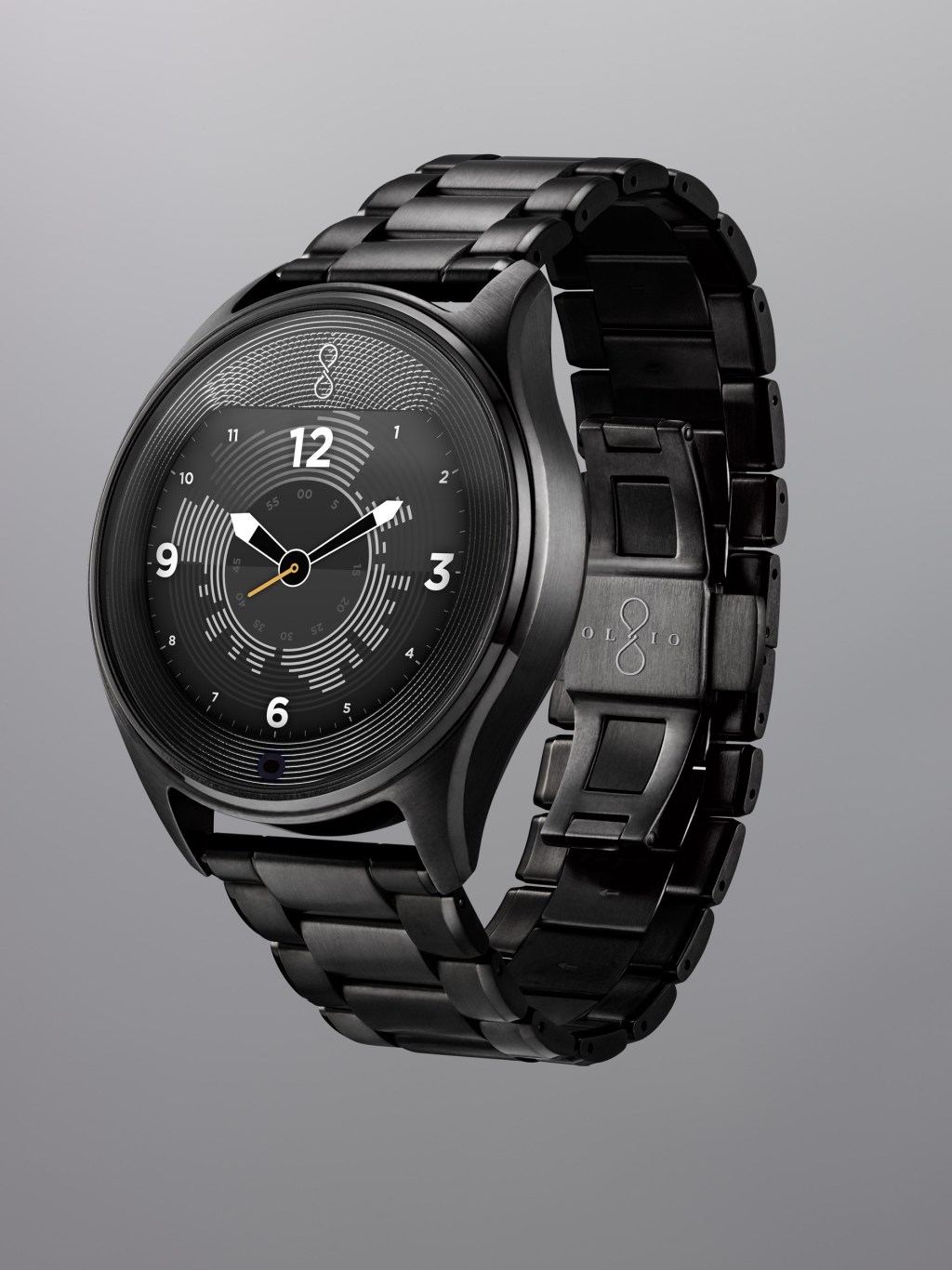
- Vector plans to release a developer platform including iOS and Android APIs for its “affordable luxury smart watch“:

Artificial Intelligence and Robots
- With Humans building to a (spoiler) messy and ambiguous denouement, news of some cute NAO robots “politely showing self awareness“:
- But you don’t need a Hollywood humanoid to build an intelligent killing machine as drones demonstrate in droves. This week Stephen Hawking and Elon Musk were among 1000 other signatories of “an open letter calling for caution around the introduction of AI weaponry“. Mic Wright on TNW struck more a grimly pessimistic note:
“grafting AI onto the tools of warfare will produce the AK-47 of the future, an endlessly replicable, increasingly cheaper means of murder. And somewhere out there, today’s equivalent of Mikhail Kalashnikov is already working on it.”
- Hitchbot represented the other friendly end of the robot spectrum. He had already hitched across Germany and Canada but didn’t fare so well in the US meeting a grisly end in Philadelphia:
just two weeks after starting its cross-country journey in Boston, Hitchbot’s trip has come to an unfortunate end. Last night, the cute little robot was vandalized and apparently decapitated in the city of brotherly love.
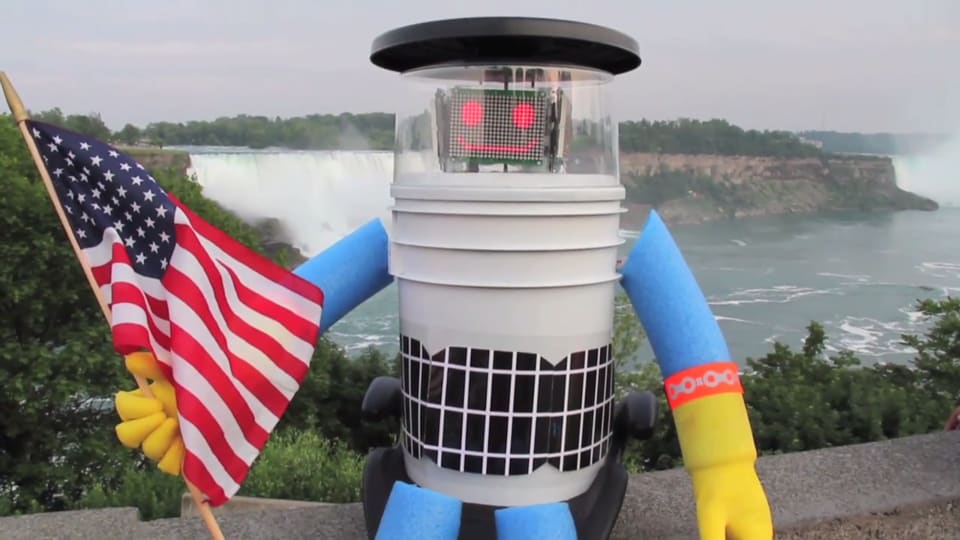
- Robots would be better advised to go to Japan where wider application of their use is more advanced than anywhere else on earth. The plans for a robot hotel for instance have a distinctly serious purpose with a stated aim to be the most energy efficient hotel on earth.
- Also in Japan, it looks like SoftBank’s Pepper who has been covered extensively in the blog over the last year, will be making his mark on the Enterprise under the name of “Pepper for Biz“. It’s robot big business in every sense:
The enterprise version of the gentle-looking humanoid machine will be available for pre-order starting on October 1st, 2015, and businesses in the country can rent one directly from SoftBank. The carrier’s robotics division is offering a $444-per-month, 3-year contract to interested parties, which means they’ll end up paying around $16,000 within that period. Sadly, they’ll have to return the unit once the contract’s over.
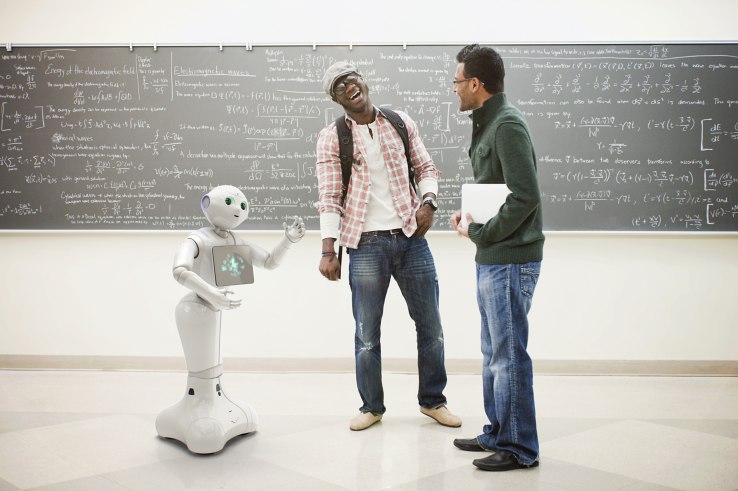
Software Engineering and Education
- A Quora poster asks “what will be the top 5 in demand programming language skills in 2015?“. The answer in approximate order of precedence according to the highest ranked answer seems to be:
- JavaScript
- Ruby on Rails
- Go
- Python
- R
- NYT highlight the lucrative earning potential of an ability to code particularly in a place like San Francisco where stories of MOOC-powered waiters-turned-developers that quadrupled their salaries are not uncommon.
- It puts into perspective the modest cost of investing in Lrn, the latest hot smartphone coding app.
- The Education keynote from PyCon courtesy of Carrie-Anne Philbin reprises some of the key lessons I’ve gleaned from running a primary school Python Code Club. Philbin has a unique perspective as an ex-teacher and Python aficionado. She identifies the following specific areas of focus in a call to arms to Python developers to help out:
- Transition from visual to text programming (Scratch->Python)
- Python3 vs Python2 (just use Python 3)
- Syntax/naming (consistency as with camel casing or not)
- Installation of extra libraries (need for an “Education Bundle”)
- Python IDE (online IDE often not possible in the school environment, IDLE is awful, Sonic Pi shows the way forward)
Startups and Innovation
- FirstRound’s ten year retrospective is a must read. In it they try to draw together their findings from around 300 seed++ level investments. The ideal profile for a successful startup founder from their analysis appears to be a young, female alumnus of a top US university that has worked at a GAFA company, tried and failed at a startup before and is (or has) a technical co-founder:
- FirstRound are also running a feature called the First Pitch Series which showcases “the original seed-stage pitch decks produced by tech startups, including big winners and failures. It helps to remember that everyone starts somewhere“. This week they resurface the 24-slide AppNexus seed capital pitch deck which was the starting point for a company that 8 years on is a huge success story:
Today, AppNexus brings in $250 million a year, employs over 1,000 people and rang in 2015 with record profitability and growth. How did it go from this deck to that reality? It’s probably one of the best pivot stories in enterprise tech.
- Quora again. This time “How do I make $100k in one year?” The top answer captures the prosaic realities well – a focus on product not service and selling “anything that’s been done before, tried and tested” vs. something risky and innovative. After that it’s down to how you work it all to generate a profit:
Profit=(((TR=SQ*SP)-(TC=(
((VC/unit)*SQ)+FC))-Tax) Profit equals Total Revenue minus Total Costs
Total Revenue equals Sales Quantity multiplied by Sales Price.
Total Cost equals Variable Costs per unit multiplied by Sales Quantity plus Fixed Costs plus Tax
Variable Costs per unit equals the price of packaging, raw materials etc. Resources that deplete when more product is made.
Total Variable Costs equals costs to (you) the business that change when (Sales Quantity) output changes.
Fixed costs equal the price of rent, insurance, light, advertising etc. When the cost to (you) the business stays the same regardless of output.
- CapGemini published a report providing lots of interesting data-led insights into how many large Enterprises are looking to address their innovation needs with innovation centres. The main purpose for doing so is to gain access and exposure to the latest digital technologies:
Engineering Management
- This recent post outlines well the distinction between a CTO and a VP Engineering (VPE).
When the engineering team reaches 20+, the need arises to divide the role of CTO in two: one person managing the development teams, and someone else acting at a technical visionary, largely outward facing, working at board level, dealing with investors and building the product roadmap.
- It’s a distinction that was captured well by Mark Suster a few years ago when he emphasised the need for process orientation and discipline in a VPE and external-facing technology thought leadership in a CTO.

- Being an Engineering Manager (EM) also requires a focus on process as well as people and projects rather than just the tech. It’s a transition many ex-engineers find difficult to make as former Twitter Director of Engineering David Loftesness highlights in a good post in which he also provides a handy EM “event loop”:
Coding, architecture and technical decision-making is no longer your primary job when you manage other engineers. This comes as a huge surprise to many who make the switch, and it’s one of the most difficult adjustments.

Lifehacking
- According to this LinkedIn post, there are “only four basic jobs” so you have to “make sure you have the right one”. The reality, particularly in larger organisations, is that the bias to action highlighted in the breakdown of the four roles does not capture the full spectrum of profiles. Instead there is arguably a black hole at the centre of the core sucking in life and vitality from all the producer nodes around it and accreting heat and waste:

- To wit, useless meetings. Even there though there is no escape from the positivist LinkedIn agenda (courtesy of Jack Welch no less) that it is possible to change the dynamic through dint of data-led, professional persuasion. Experience suggests it isn’t quite that easy in the dynamics of a typical enterprise where the people you’re meeting with may well be thoroughly wash-rinsed through various means of erosion every couple of years.
- It’s enough to make you want to lie in and get away from it all as this Quora post articulates:
You have to be excited about something to do in the morning. If you’re not, then sleeping in as an option is always gonna feel better. You probably can remember a time when you didn’t want to sleep in or couldn’t wait to get up.
- In case you want to break that habit too, another respondent dispenses the rather inevitable advice that you need to go to bed earlier and offers this motivation:
Wake up times of some famous & productive people:
– Robert Iger (CEO Disney) – 4:30 AM
– Tim Cook (CEO Apple) – 4:30 AM
– Howard Schultz (CEO Starbucks) – 5 AM
– Andrea Jung (CEO AVON) – 4:00 AM
– Richard Branson (CEO Virgin) – 5:45 AM
Society and Culture
- 10 years ago David Mery was unlawfully arrested starting a journey of self-discovery which he has written about in a thought-provoking post emphasising the need for wider “legitimisation of self-diagnoses and acceptance of neurodiversity” in society.
Ten years ago I was unlawfully arrested when attempting to take the tube after work. The police noticed that my behaviour was different, found it suspicious and decided I must be a terrorist
- Mainstream media frequently desires a simple narrative to explain difficult societal issues like why seemingly normal people are drawn into terrorism, a topic that is vexing many at present. We live an inherently complex world that in many ways is becoming ever more complicated and interconnected. It’s a subject that has been explored at length by Adam Curtis most recently in his film Bitter Lake. Two recent articles cover the rise of ISIS suggests that here too there are no easy answers. The first explores if the movement is a warped response to globalisation. The second simply asserts that there is an essential mystery as to how such a nihilistic organisation came to be and inherent unpredictability about how it will evolve.

